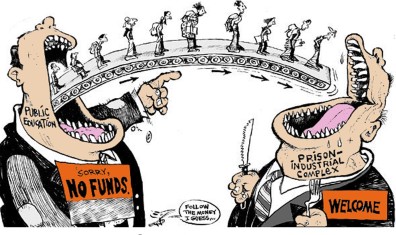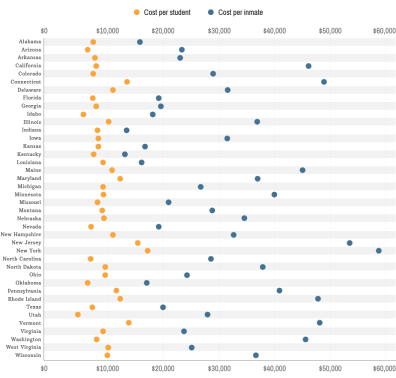In the few weeks that we have been in this class I can recall three incidents that have come to my attention involving K-12 students and law enforcement. Ahmed Mohamed was arrested for making a clock, essentially the 14 year old was too intelligent for his own good? After that incident, video of 16 year old Emilio Mayfield being slammed to the ground by police officers after being struck in the face for jaywalking to catch the bus surfaced. In more recent news we have the student in South Carolina who was flipped out of her desk and thrown across the room by Deputy Ben Fields, who was called in after the student was identified as being disruptive to the class.
I understand that these are all very different circumstances but at the end of the day we have three teenagers having experienced unnecessary trauma of being handcuffed and hauled to a police station with fear and questions of self worth running through their heads. What does it say when you have been conditioned to believe that bad people, criminals, are the ones who get handcuffed and you are the one sitting in the back of a police car after being in a classroom?
These incidents help visualize our far too intimate relationship between institutions of education and institutions of incarceration:
Heightened after fear of school shootings we have 82,000 school resource officers and security guards working in public schools (Brown). Not to say that the safety of students and staff should not be a priority, but what does it say when the students safety is put in jeopardy by the person who is their to protect them? Certain student and law enforcement encounters question the priority:
How do we justify a 5 year old with ADHD getting handcuffed with zip ties on his hands and feet, forced to go to the hospital for a psychiatric evaluation and being charged with battery on a police officer (Snyder)?
In the end the mother of 5 year old Michael Davis points out that rather than an apology she wishes her son had the proper education catering to Michael’s learning disabilities, the school didn’t offer behavioral services to Michael or his mother, because it would cost the district money.

Education vs Prison Costs

Questions:
- After learning the mechanics of the school system feeding into the prison system, do you have an issue with more money being spent on prisoners than students?
- In this instance if we address the needs of the students, we would diminish the needs for prisoners by keeping them from becoming prisoners, so why don’t we prioritize education?
- Living in a time fearful of school shootings it seems as though police officers will not be leaving the classroom anytime soon. Does this leave us with a new field of criminal justice? Intro to policing K-12? Who takes on this responsibility, the college level, individual police departments, the school?
References:
“American Kids & The School-To-Prison Pipeline.” YouTube. Ed. AJ+. YouTube, 18 May 2015. Web. 11 Nov. 2015.
Brown, Emma. “Police in Schools: Keeping Kids Safe, or Arresting Them for No Good Reason?” Washington Post. The Washington Post, 8 Nov. 2015. Web.
School to Prison Graphic (I): http://mckpr.com/upload/prisonpipelinegraphic.jpg
School to Prison Illustration (II): http://www.suspensionstories.com/wp-content/uploads/2010/10/School-to-Prison-Illustration.jpg
Snyder, Michael. “19 Crazy Things That School Children Are Being Arrested For In America.” End Of The American Dream. N.p., n.d. Web. 31 Jan. 2012.
“Stuck In The School-To-Prison Pipeline.” YouTube. Ed. AJ+. YouTube, 20 May 2015. Web. 11 Nov. 2015.
“Taking Back Our Schools: Organizing to Stop the School-to-Prison Pipeline.” YouTube. Ed. Advancement Project. YouTube, 23 July 2013. Web. 11 Nov. 2015.
Yellin, Tal. Education vs Prison Costs. 2013. CNNMoney, n.p.
